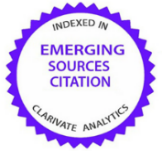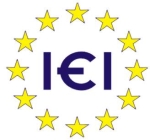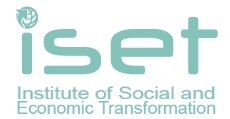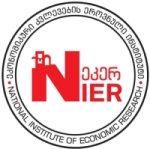Assessment of China’s Macro-Readiness for Integrated Innovative Management Technologies Employment
Abstract
Introduction. Economic entities should constantly apply various forms of innovation, including managerial and organizational innovations, to ensure the processes of developing and acquiring adaptive capacity. One of these innovations is integrated management technologies covering several interacting heterogeneous technological, economic, organizational, social, and psychological processes or several management functions.
Aim and tasks. The study aims to elaborate a procedure for assessing a country’s macro-readiness to apply integrated innovative management technologies and qualitatively characterise its level.
Results. An assessment of macro-readiness to apply integrated innovative management technologies was conducted using the case of China. In order to obtain a generalized evaluation of the country’s macro-readiness to apply integrated innovative management technologies, synthetic taxonomic indicators based on readiness components and a general synthetic indicator were generated. The synthetic human capital and research indicator changed from low (0.243) in 2016 to high (0.647) in 2020. The same trend is inherent in the synthetic indicator of ICT availability and use, which increased from 0.367 to 0.920, and in the synthetic indicator of institutional and business environment, which increased from 0.310 to 0.876. Although it has improved from 0.205 to 0.451, the synthetic indicators of financial resources and development have not yet reached a high level.
Conclusion. The suggested procedure for assessing macro-readiness to apply integrated innovative management technologies is based on constructing a synthetic indicator of readiness, combining the taxonomic indicators of human, digital, financial, and institutional readiness. This procedure, implying the determination of their qualitative levels, enables us to determine a country’s readiness to support business entities’ adoption of new management technologies. The assessment of China's readiness for applying integrated innovative management technologies using the developed approach revealed that the ICT component is the best developed, while the financial component is the most underdeveloped.
Keywords:
management, readiness, technology, innovation, synthetic indicator.References
Akunyumu, S., Fugar, F.D.K., Adinyira, E., & Danku, J.C. (2021). A review of models for assessing readiness of construction organisations to innovate. Construction Innovation, 21, 2, 279-299. https://doi.org/10.1108/CI-01-2020-0014
Bavar, M. S., Naderan, A., Saffarzadeh, M. (2023). Evaluating the spatial effects of environmental influencing factors on the frequency of urban crashes using the spatial Bayes method based on Euclidean distance and contiguity. Transportation Engineering. 12, 1-13. https://doi.org/10.1016/j.treng.2023.100181
Bendi, D. (2017). Developing an offsite readiness framework for Indian construction organisations, Doctoral dissertation, University of Salford.
Bernardo, M. (2014). Integration of management systems as an innovation: a proposal for a new model. Journal of Cleaner Production, 82, 132-142. http://dx.doi.org/10.1016/j.jclepro.2014.06.089
Chmutova, I. M. (2014). Implementation stages of financial management system technologies in banking. Bulletin of Odessa National University, 3/4, 116–120.
Dutta, S., & Lanvin, B. (eds.) (2019). The Network Readiness Index 2019: Towards a Future-Ready Society. Washington D.C., USA.
Dutta, S., & Lanvin, B. (eds.) (2020). The Network Readiness Index 2020: Accelerating Digital Transformation in a post-COVID Global Economy. Washington D.C., USA.
Dutta S., & Lanvin B. (eds.) (2021). The Network Readiness Index 2021: Shaping the Global Recovery. How digital technologies can make the post-COVID world more equal. Washington D.C., USA.
Dutta S., & Lanvin B. (eds.) (2022). The Network Readiness Index 2022: Stepping into the new digital era. How and why digital natives will change the world. Washington D.C., USA.
Dutta, S., Lanvin, B., Leon, R.V., & Wunsch-Vincent S. (eds.) (2022). Global Innovation Index 2022: What is the future of innovation-driven growth? Geneva. World Intellectual Property Organization.
Dutta, S., Lanvin, B., & Wunsch-Vincent, S. (eds.) (2019). Global Innovation Index 2019: Creating Healthy Lives – The Future of Medical Innovation. Ithaca, Fontainebleau, and Geneva. World Intellectual Property Organization.
Dutta, S., Lanvin, B., & Wunsch-Vincent, S. (eds.) (2020). Global Innovation Index 2020: Who Will Finance Innovation? Ithaca, Fontainebleau, and Geneva. World Intellectual Property Organization.
Dutta, S., Lanvin, B., & Wunsch-Vincent, S. (eds.) (2021). Global Innovation Index 2021: Tracking Innovation through the COVID-19 Crisis. Geneva. World Intellectual Property Organization.
Grant, R. M. (2016). Contemporary Strategy Analysis: Text and Cases Edition, 9th Edition. John Wiley & Sons.
Hutsaliuk, O., Smutchak, Z., Sytnyk, O., Krasnozhon, N., Puhachenko, O., & Zarubina, A. (2020). Mass labour migration in the vector of international tourism as a determinant sign of modern globalization. Turismo: Estudos & Práticas (UERN), Mossoró/RN, Caderno Suplementar, 3.
ITU. (2022). https://www.itu.int/en/ITU-D/Statistics/Pages/publications/wtid.aspx
Kuznetsova, N.B. (2022). Konkurentospromozhnist talantiv Ukrainy u svitovykh reitynhakh. Socio-Economic Problems of the Modern Period of Ukraine, 153 (1), 45-53. https://doi.org/10.36818/2071-4653-2022-1-7
Lanvin, B., & Monteiro, F. (eds.) (2019). The Global Talent Competitiveness Index 2019. Entrepreneurial Talent and Global Competitiveness, Fontainebleau.
Lanvin, B., & Monteiro, F. (eds.) (2020). The Global Talent Competitiveness Index 2020. Global Talent in the Age of Artificial Intelligence, Fontainebleau.
Lanvin, B., & Monteiro, F. (eds.) (2022). The Global Talent Competitiveness Index 2022. The Tectonics of Talent: Is the World Drifting Towards Increased Talent Inequalities? Fontainebleau.
Lanvin, B., & Monteiro, F. (eds.) (2021). The Global Talent Competitiveness Index 2021. Talent Competitiveness in Times of COVID, Fontainebleau.
Li, J., & Kassem, M. (2019). A roadmap to achieving readiness for macro adoption of distributed ledger technology (DLT) in the construction industry. Proceedings of the Creative Construction Conference 2019, р.2-7. https://doi.org/10.3311/CCC2019-001
Lokuge, S., & Sedera, D. (2014). Enterprise systems lifecycle-wide innovation readiness. PACIS- 2014 Proceedings, 335.
Plaksiuk, O. Horvathova, V., & Yakushev, O. (2023). Human capital as a factor increasing the efficiency and competitiveness of an enterprise. Academy Review, 1 (58), 160-174. https://doi.org/10.32342/2074-5354-2023-1-58-12.
Porter, Michael E. (2008). The Five Competitive Forces That Shape Strategy. Special Issue on HBS Centennial. Harvard Business Review, 86, 1, 78–93.
Prokopenko, O., Toktosunova, C., Sharsheeva, N., Zablotska, R., Mazurenko, V., & Halaz, L. (2021). Prospects for the Reorientation of Investment Flows for Sustainable Development under the Influence of the COVID-19 Pandemic. Problemy Ekorozwoju, 16(2), 7-17. http://doi.org/10.35784/pe.2021.2.01
Rosen, J. (2018). Evaluating Innovation Readiness – A Case Study. Master of Science Thesis TRITA ITM-EX 2018:578 KTH Industrial Engineering and Management Machine Design. Stockholm.
Setiawan, A., Sulaswatty, A., Meliana, Y., & Haryono, A. (2018). Innovation Readiness Assessment toward Research Commercialization: Case of Surfactants for Food Processing. International Journal of Innovation, 6(2), 180-193. http://dx.doi.org/10.5585/iji.v6i2.291
Syrvetnyk-Carij, V.V. & Duljaba, N.I. (2019). Taxonomic analysis as an instrument of detection opportunities for effective management of economic potential trade enterprise consumer cooperation. Global and National Problems of the Economy, 9, 419-423.
The World Bank. (2022). DataBank. https://databank.worldbank.org
UNESCO Institute for Statistics. (2022). http://data.uis.unesco.org
Webster, A. & Gardner, J. (2019) Aligning technology and institutional readiness: the adoption of innovation, Technology Analysis & Strategic Management, 31, 10, 1229-1241. https://doi.org/10.1080/09537325.2019.1601694
Yankovyi, V., Koval, V., Dudka, T., & Bykhovchenko, V. (2021). Statistical assessment of project economic priority in company's investment management. Revista Gestion de las Personas y Tecnologia, 42, 98-119. https://doi.org/10.35588/gpt.v15i42.5284
If the article is accepted for publication in the journal «Economics. Ecology. Socium» the author must sign an agreementon transfer of copyright. The agreement is sent to the postal (original) or e-mail address (scanned copy) of the journal editions.






















